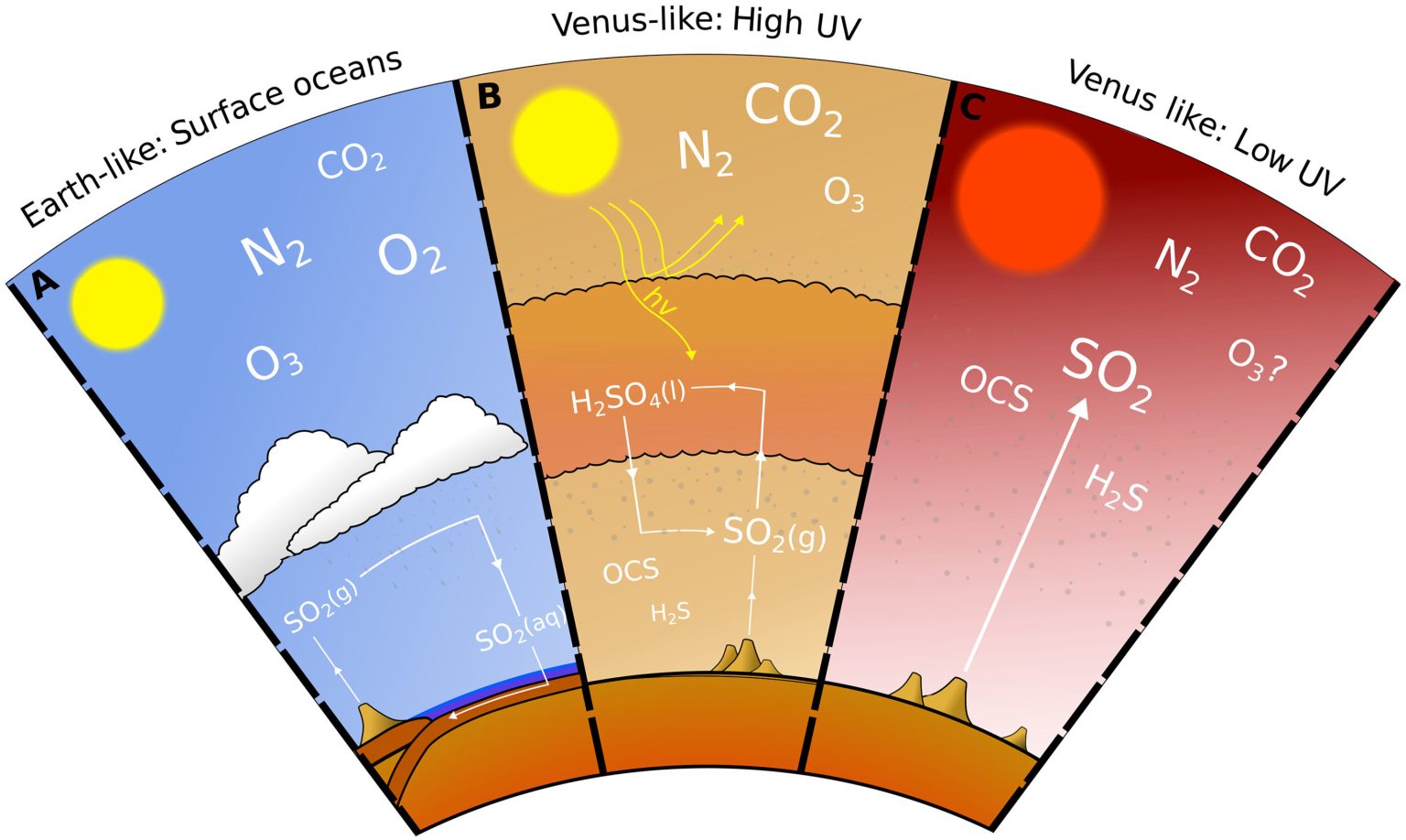Generally, when scientists look for signs of life in the spectral lines of a distant planet, they look for carbon dioxide, oxygen and water. However, it turns out that even sulfur can be a sign that there are living beings present on a celestial body.

Limitations of biomarker search methods
Astronomers have identified sulfur as a potentially crucial indicator in narrowing the search for life on other planets. While sulfur itself does not necessarily indicate suitability for life, significant concentrations of sulfur dioxide in a planet’s atmosphere can indicate that a planet is likely uninhabitable, allowing researchers to exclude it from further consideration.
The discovery of extraterrestrial life remains one of the most requested goals of modern astronomy. However, it is a very challenging task. The James Webb Space Telescope is unlikely to detect biosignatures — atmospheric gases produced by living organisms on neighboring planets. Similarly, the future Habitable Worlds observatory will only be able to evaluate a limited number of potentially habitable exoplanets.
One of the main obstacles astronomers face is the generally faint nature of biosignature spectra. To solve this problem, they focus on the potential ability of planets to support life, particularly because of the presence of water vapor in their atmospheres. A planet with a significant water vapor content may be more habitable.
However, detecting water alone poses some challenges. For example, distinguishing between Earth and Venus based on atmospheric spectra alone is difficult because of their similarities if you only look for water vapor.
Sulphur dioxide as an indicator gas
Recently, in a study published in the journal Science Advances, a team of astronomers discovered another potentially useful indicator gas for distinguishing between uninhabitable and possibly habitable worlds: sulfur dioxide. Warm, humid planets such as Earth contain minimal levels of sulfur dioxide because it is washed out of the atmosphere by rainfall. Conversely, Venus also has little sulfur dioxide because the Sun’s ultraviolet radiation turns it into hydrogen sulfide in the upper atmosphere, which drives it downward.
Planets orbiting red dwarf stars have a different scenario. These stars emit minimal ultraviolet radiation, allowing sulfur dioxide to persist in the upper atmospheres of dry, uninhabitable planets. Red dwarfs are of particular interest because they are the most common type of star in the galaxy, and many neighboring systems such as Proxima Centauri and TRAPPIST-1 contain planets around red dwarfs, making them prime targets for future searches for life.
A new approach for identifying habitable planets
This new sulfur dioxide approach doesn’t identify planets that may be habitable, but it does help rule out those that probably aren’t. If significant amounts of sulfur dioxide are found in the atmosphere of a rocky planet orbiting a red dwarf, it indicates a dry, hot world with a thick atmosphere and little water, similar to Venus.
Such planets can be deprioritized in the search for life. In contrast, the lack of significant sulfur dioxide content may indicate that the planet is worth further observation for water vapor and potential life.
The search for life on other planets will require great research effort and unwavering determination. Any method, including analyzing sulfur dioxide levels to organize candidate lists, is extremely valuable in this case.
According to phys.org


